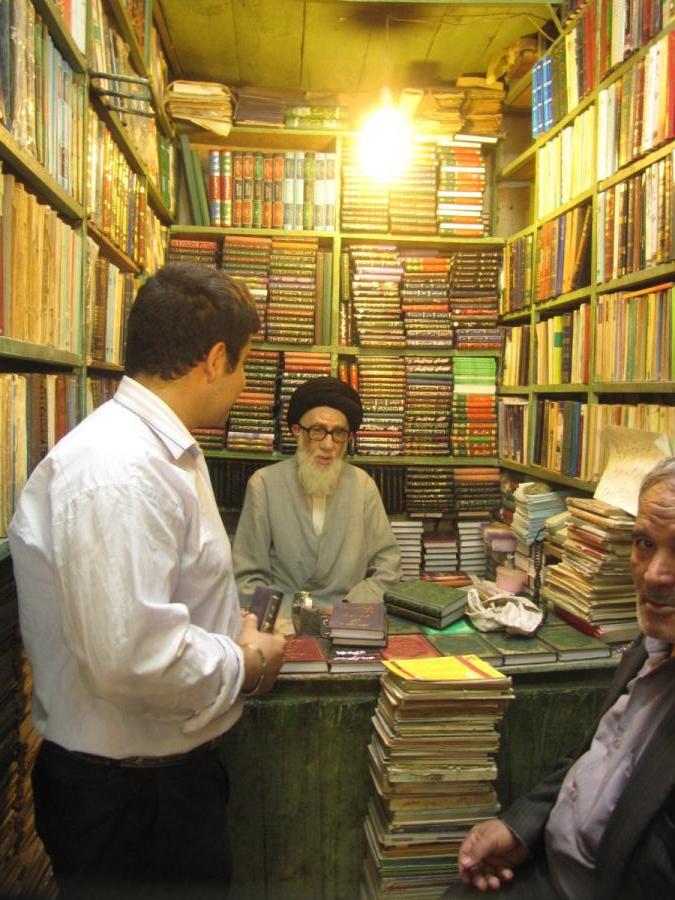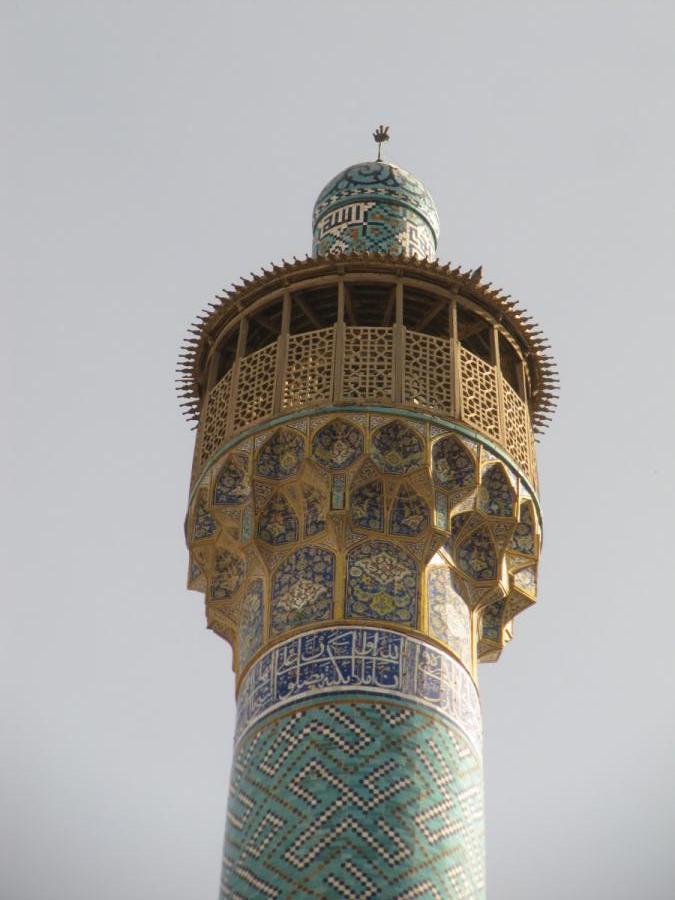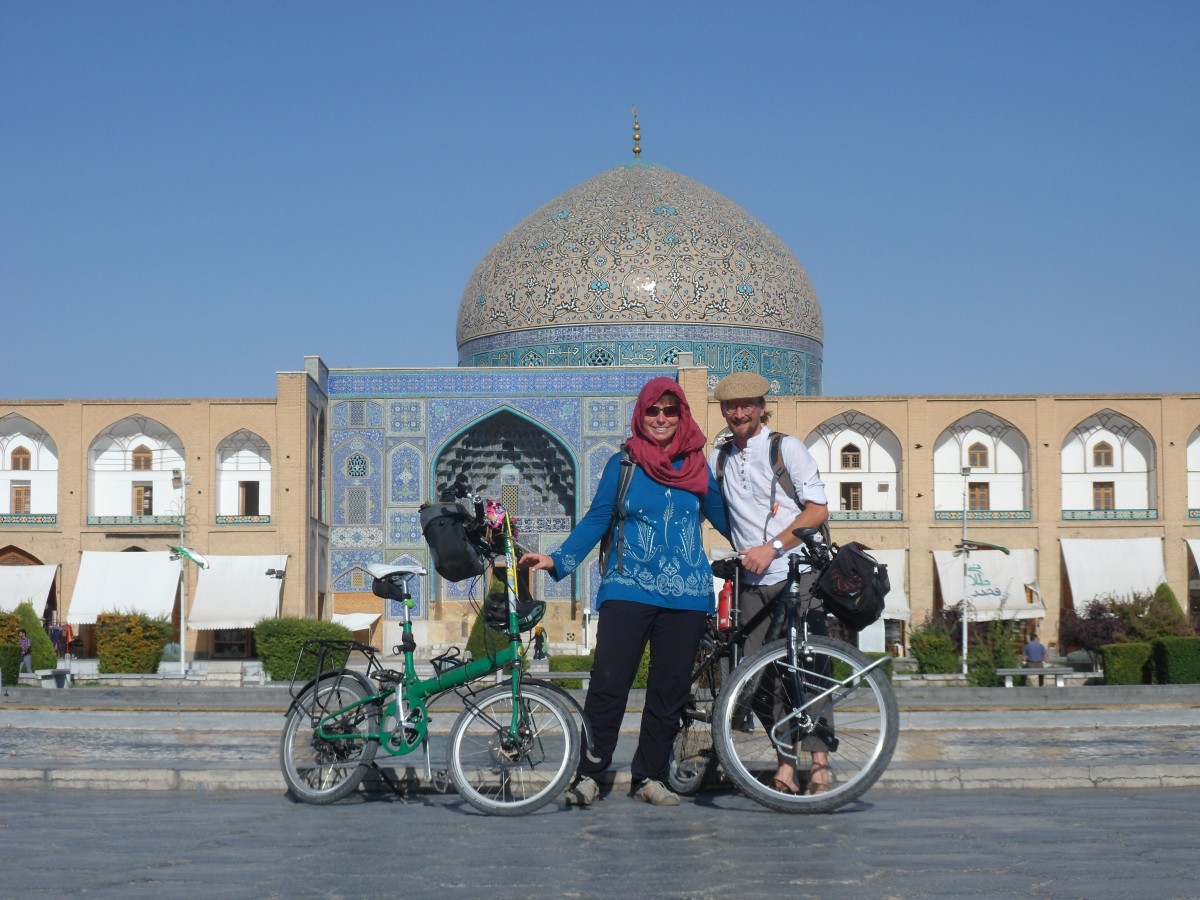The people waiting for the Trans-Asia express in Kayseri look very modern. Tank tops for the girls, hardly a woman wears a head scarf. Some of them speak good English and are curious about the two foreigners with bicycles. When the train arrives, a suitcase and cartoon-bearing crowd gathers at the luggage wagon and attempts to dump their loads inside. All at once.
The slow paced 20-hour train ride to Van Gölü through the dry land is anything but boring. 50-year old Ismael, our compartment mate teaches us a heap of Farsi words, without a single word English. In the train restaurant, the few foreigner tourists gather to drink the last beers. Most of Iranians have visited some Exile-relatives in Ankara or Kayseri. Turkey is sort of a Getaway place for Iranians. Few other countries they can travel freely, as we learn from Reza who speaks very good English.
In Tatvan the train ends, and all passengers board the ferry over the biggest lake in Turkey. We leave in the late afternoon. Many passengers gather on the deck, enjoy the breeze and the sunset. By nightfall, men and women start to dance and clap their hands happily. We reach Van by midnight. From here another train goes to Tehran. Suddenly the women wear headscarfs or the black chadors. In a crowded waiting hall, Reza helps us getting seats for this train. Everyone is tired, but sleep is rather impossible that night. First all passengers are queuing at the Turkey border post. It takes ages, and we can only return to the train when everyone is ready. An hour later, the same procedure at the Iranian border post.
By sunrise all passengers are required to leave the train in a small gorge. Customs – everyone gets his bags and packs from the luggage. The customs officers check the stuff of the Iranians thoroughly. Luckily our bikes and bags can remain in the train, and when we get to the checkpoint, we are just waved through. This border crossing is a true ordeal!


Cycling the five kilometers from the train station into the city center of Tabriz is an amazing experience. Suddenly, the writings on the sign are not readable for us anymore. Old Paikan limousines and small motor bikes drive hardly faster then us. Many drivers would call us out of their cars: “Welcome to Iran! Where are you from?”
Later in the evening, we meet my former workmate Christian and his Iranian friend Babak. To meet Christian on such an unlikely place after three years is a really funny thing. And Babak actually studies in Germany. He drives us through the modern parts of Tabriz. Places that Babak remembers as empty spaces are bustling shopping areas now.
Tabriz is known for its old large bazar. With 7 kilometer of brick-built roofs over the shopping alleys it is one of the largest in Iran. Spices, jewelry, stationary, last but not least the famous Iranian carpets, anything is available here. Every once in a while small motorbikes or old men with big wooden carts push through the people in narrow lanes to supply the shops. Once, there were a number of caravanserai's and Koran schools here, too. One exit leads to an old mosque with a courtyard full of Imams discussing in the shadow of the tall walls. On the opposite side, two colorful tiled minarets border a mighty portal. We are allowed into the prayer hall from Seljuk times. The pillars of the arches and small domes are fine red brickwork. Windows with colored glass illuminate the hall nicely. Carpet sellers lure us with tea. Unfortunately, we couldn't find the magic flying carpet.
Two days later we get on a night bus to Isfahan. Meanwhile Kathrin did some research on the web, and we fine-tuned our plans: Rather than venture a lengthy application for the Indian visa in Tehran, we would try to get the visa in Muscat, Oman. But before we would visit the historical highlights of Iran, and use public transport for the lengthy parts.
Isfahan was a mighty capital of the second Persian empire. The town is located in a flat high plateau, surrounded by steep rocky mountain sides. The list of attractions seems endless. The Imam square which is the second biggest square in the world is surrounded by a big bazar, two incredible mosques and a palace. Classic horse carriages gallop tourist around the square. The glamour of the colorful tiled domes and iwans (Muqarna decorated half domes inside great portals) of these buildings are beyond my lingual abilities.
In the Shah Mosque, we are invited for tea and sweets by Imam students of our age. We sit for an hour with them and talk about traveling and Islam. Somewhat north of the square is the biggest mosque of Iran, the Jameh Mosque. During the centuries-old history, it has been expanded and renewed. Today it contains aspects of many architectural eras.
The people on the Imam square and in the streets are very curious to talk with foreigners. At the Chehel Sotun palace, we were once closed in by a group of thirty young English students. Usually, Kathrin and I impersonate ourselves as married when talking to elderly people. The young people giggle when we tell them that we are “married here in Iran”. Relationships outside marriage are not allowed, nor is public kissing. The young woman in the streets wear their colorful head scarves as fashionable as possible. Big clips hold the long hair high, and the scarf on top of that reveals more hair than it covers. That's fine as long as the moral guardians are not around. And Kathrin does a great job not to wipe off her unloved headscarf in the heat nor to put it on when leaving the hotel room.
There are old brick stone bridges over the dry wide river bed, and on its green shore people sit and smoke water pipes by sunset. A little outside, the ruins of an 2500 year old fire temple crowns a rocky hill. It was once dedicated to the Zoroastrian religion which preceded Islam in ancient Persia. Nearby are remains of some ancient pigeon towers that were used to collect the doves dung as fertilizer. Across the river, we meet some young men smoking water pipe on a carpet in front of a few trees. We chat a little, smoke a little, and after a few minutes start to dance Iranian dances. The Iranian love to laugh and smile and dance!
So do we. But next we'd love to cycle to Shiraz.
{youtube}nPh5qyzFrjU{/youtube}
